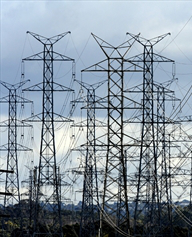New SA link outlined
 South Australia's electricity distributor is looking at options for a new interconnector to the eastern states.
South Australia's electricity distributor is looking at options for a new interconnector to the eastern states.
SA’s ElelctraNet says its new high-voltage powerline will be built to Bulli Creek in Queensland, Mount Piper or Buronga in New South Wales, or Horsham in Victoria.
The project is aimed at shoring-up the South Australian electricity network in the wake of September's statewide blackout, but will come with a bill from $500 million to $2.5 billion.
The company has started the offical cost-benefit tests that govern major investments in the national energy market.
“South Australia needs a long-term solution that will facilitate our energy transformation, while improving system security and placing downward pressure on electricity prices,” ElectraNet chief executive Steve Masters said.
The company says that without the new link, South Australian customers will pay $500 million more per year than their interstate counterparts.
“One credible option is a new interconnector between South Australia and the eastern states, which would increase access to lower cost generation,” he said.
The existing Heywood interconnector between South Australia and Victoria has become even more crucial since the closure of the Port Augusta power station, but it failed during the recent SA power crisis.
ElectraNet says a new interconnector will provide more support for South Australia's high rates of renewable energy.
“Countries such as Denmark, Germany and the United Kingdom also source a high percentage of their energy needs from renewable generation, but have much stronger [interconnectors] that has enabled its integration,” Mr Masters said.
Premier Jay Weatherill said it was an exciting idea.
“We're very excited that we're now having discussions about how we can play our clean, green renewable energy into the national electricity market,” Mr Weatherill said.
“If the best way to actually play more renewable energy is to have better connection with renewable energy-rich South Australia, then that should be shared across the whole system, it shouldn't be a burden that just falls on one state.”








 Print
Print